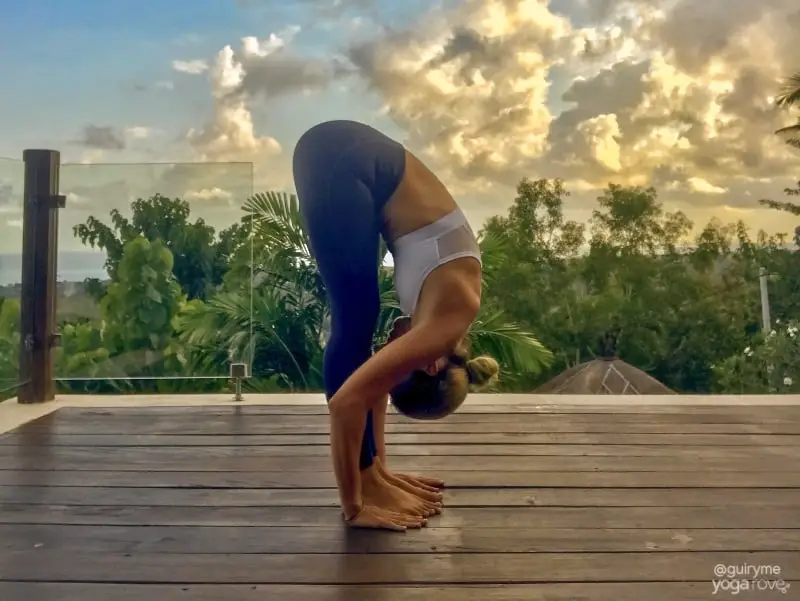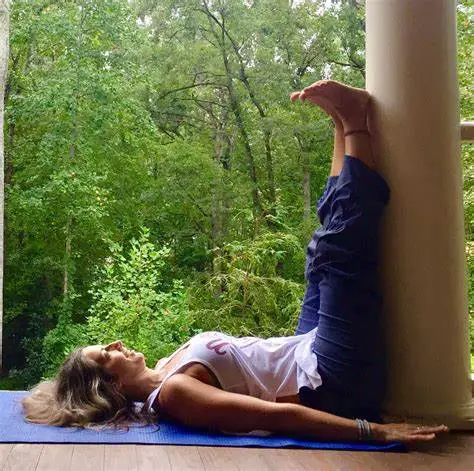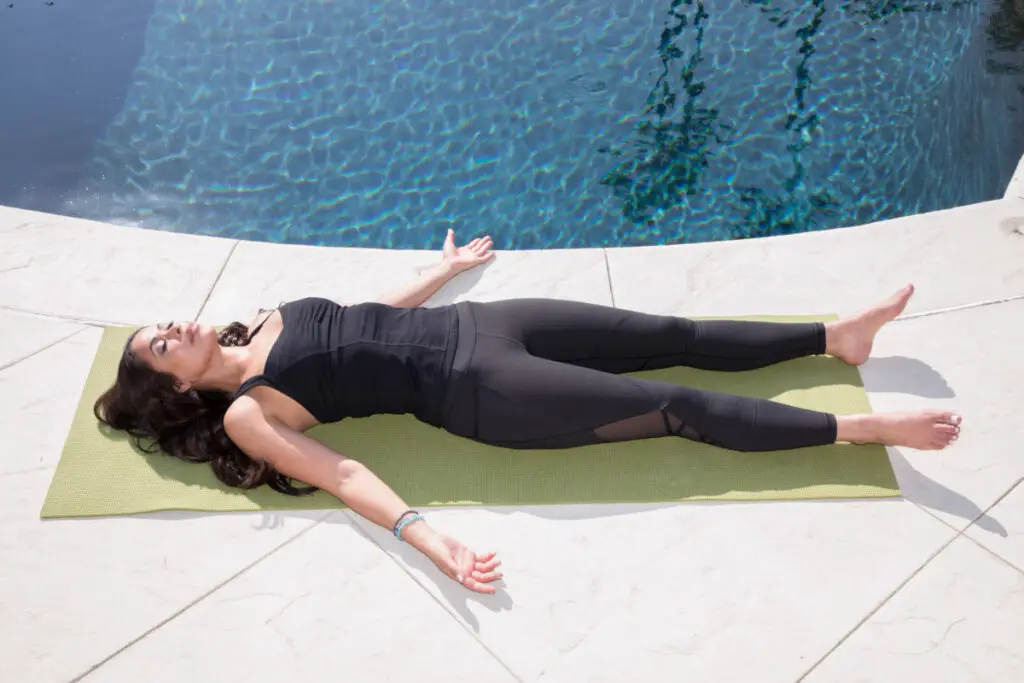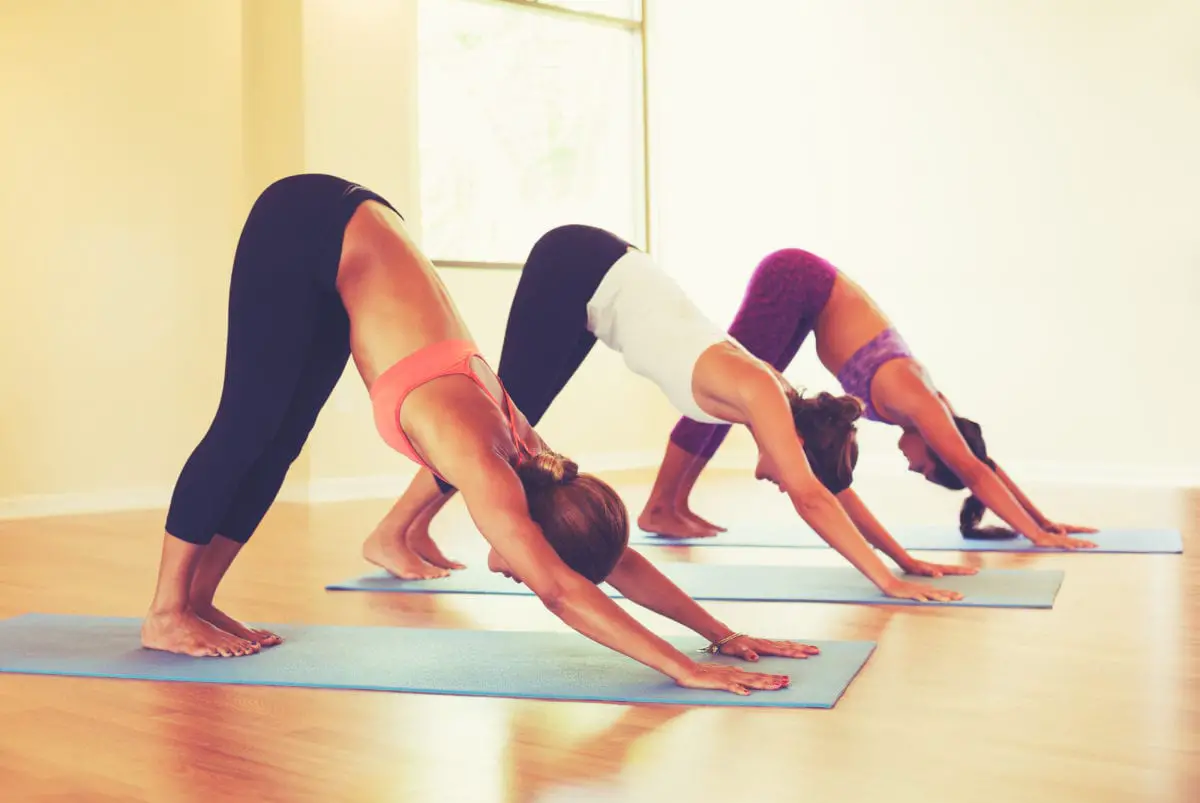Stress is an inevitable part of our lives, but it doesn’t have to consume us. Yoga is a powerful tool that can help manage stress and improve overall well-being. In this article, we’ll explore the 5 best yoga poses for stress relief.

Review The 5 Best Yoga Poses For Stress Relief
1. Child’s Pose (Balasana)
Child’s pose is a gentle, restorative yoga pose that can help calm the mind and relieve stress. To perform this pose, start on your hands and knees with your toes touching and your knees hip-distance apart. Lower your hips back towards your heels and stretch your arms out in front of you. Rest your forehead on the ground and breathe deeply for several breaths.

2. Downward-Facing Dog (Adho Mukha Svanasana)
Downward-facing dog is a classic yoga pose that can help relieve tension in the spine and calm the mind. To perform this pose, start on your hands and knees with your wrists under your shoulders and your knees under your hips. Lift your hips up towards the ceiling and straighten your arms and legs, creating an inverted V-shape with your body. Breathe deeply for several breaths.

3. Standing Forward Fold (Uttanasana)
Standing forward fold is a calming yoga pose that can help release tension in the neck and shoulders. To perform this pose, stand with your feet hip-distance apart and fold forward from the hips, bringing your hands to the ground or to a block. Let your head hang heavy and breathe deeply for several breaths.

4. Legs Up the Wall (Viparita Karani)
Legs up the wall is a restorative yoga pose that can help promote relaxation and relieve stress. To perform this pose, lie on your back with your legs straight up against a wall or a stack of pillows. Rest your arms by your sides and breathe deeply for several minutes.

5. Corpse Pose (Savasana)
Corpse pose is a final relaxation pose that can help calm the mind and release tension in the body. To perform this pose, lie on your back with your arms by your sides and your palms facing up. Close your eyes and breathe deeply for several minutes.

By practicing these top 5 yoga poses for stress relief, you can help manage stress and improve your overall well-being.
Frequently Asked Questions
Yoga is a popular way to reduce stress and anxiety, but if you’re new to yoga, you might have some questions. Here are some frequently asked questions about yoga for stress relief:
1. What are the best yoga poses for stress relief?
Some of the best yoga poses for stress relief include child’s pose, downward facing dog, seated forward bend, corpse pose, and legs up the wall. These poses help to calm the mind, release tension in the body, and promote relaxation.
2. How often should I practice yoga for stress relief?
Ideally, you should aim to practice yoga for stress relief at least three times a week. However, even a few minutes of yoga each day can have a positive impact on your mental and physical wellbeing.
3. Can yoga help with anxiety?
Yes, yoga can be an effective way to manage anxiety. The practice of yoga helps to calm the mind, reduce stress and tension in the body, and promote relaxation. Studies have shown that regular yoga practice can lead to a reduction in symptoms of anxiety.
Additional information
If you are looking to add some breathing techniques with your yoga routine, check out “Stress Management: Breathing Exercises for Relaxation”
For more on workouts and yoga check out the blog At Home Fitness Mom.
Conclusion
Stress can have a significant impact on our mental and physical health, but yoga offers a powerful tool for managing stress and promoting relaxation. By incorporating these top 5 yoga poses for stress relief into your practice, you can take steps towards a calmer, more peaceful mind and body.
As always, it’s important to listen to your body and work within your own limits. If you have any injuries or medical conditions, consult with a qualified medical practitioner.

